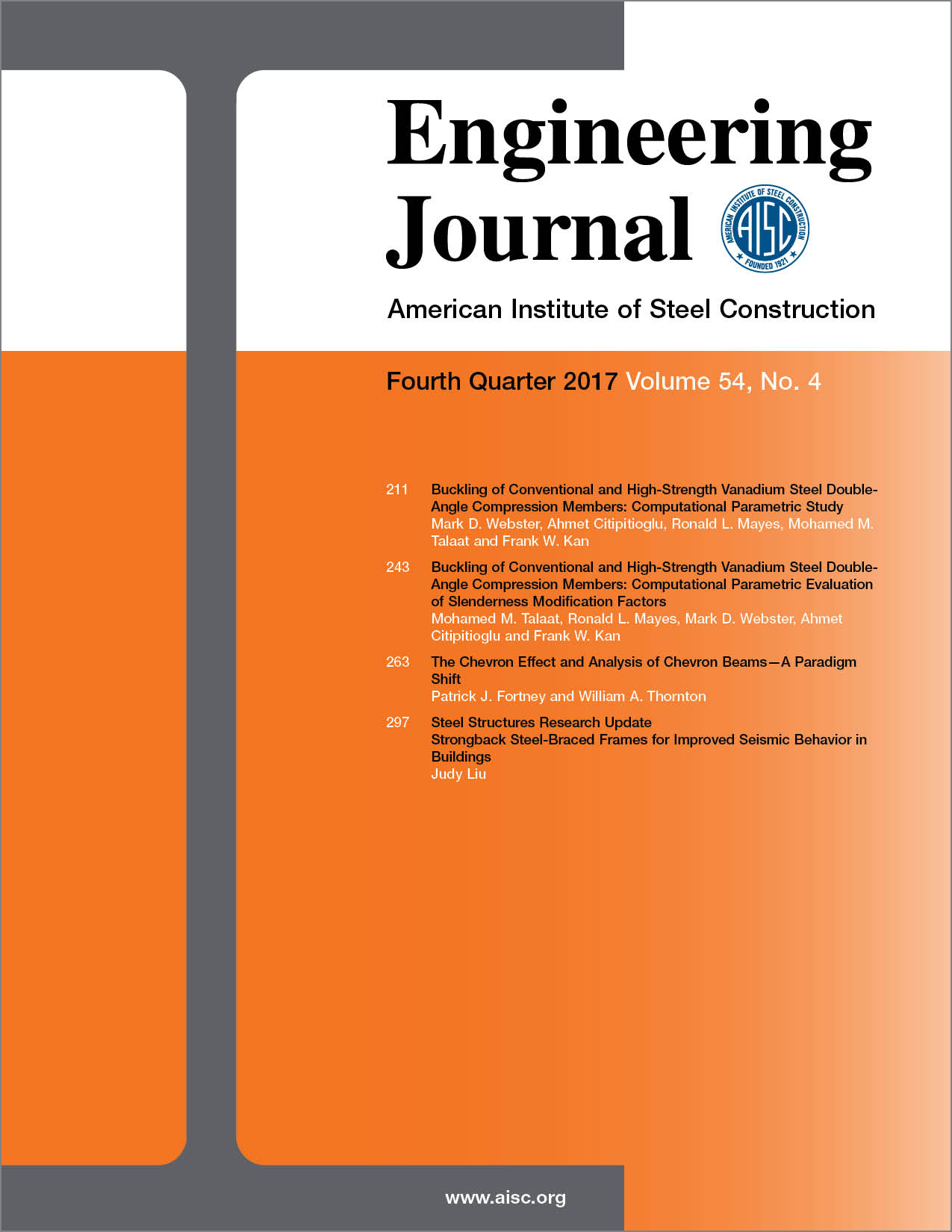Buckling of Conventional and High-Strength Vanadium Steel Double-Angle Compression Members: Computational Parametric Study
DOI:
https://doi.org/10.62913/engj.v54i4.1123Keywords:
high-strength vanadium steel, compression, computational parametric study, modification factors, buckling analysisAbstract
High-strength, low-alloy vanadium (HSLA-V) steel offers higher strength and toughness than conventional steel. The resulting lighter weight and more slender structural components are more susceptible to buckling in compression. A series of conventional Grade 50 steel and HSLA-V (nominal Grade 80) steel angle compression components was tested at Lehigh University’s ATLSS laboratory. This experimental database was used to develop and verify a modeling approach using the general purpose finite element (FE) software ABAQUS to simulate the component buckling response. This study extensively evaluates the 2010 American Institute of Steel Construction (AISC) and Steel Joist Institute (SJI) design equations for double-angle buckling, resulting in significant findings and recommendations for both specifications. The primary objective of this paper was to assess the validity of applying the buckling equations given in the SJI 2010 Design Specification for long-span and deep-long-span joists (SJI, 2010) to double-angle compression members manufactured using 80-ksi HSLA-V steel. Present SJI specifications are applicable only for steel with specified yield stress of 50 ksi or less. Another objective of this study was to compare the design equations for compression buckling in the SJI Design Specification and the AISC 2010 Specification (AISC, 2010) and to develop recommendations for enhancing the accuracy of buckling equations commonly used in current practice. To achieve these goals, an extensive database of analytical buckling simulations was created to compare the performance of the code buckling equations in determining the buckling strength for regular and HSLA-V steel compression members. Potential solutions for resolving the observed lack of conservatism in the strong-axis buckling predictions were investigated. The use of the modified component slenderness ratio in the AISC provisions significantly improved the accuracy of the SJI buckling strength predictions for strong-axis buckling cases with Q-factor values less than 1.0.

